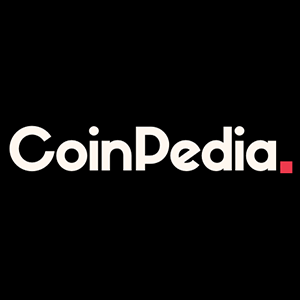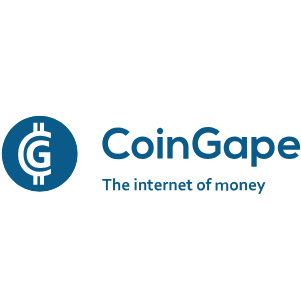Summary Semler Scientific acquired 828 BTC for $57 million, spending 90% of their cash reserves on Bitcoin purchases. Market has responded positively to the Bitcoin treasury strategy. SMLR's quant metrics are strong, and the QuantaFlo product has a moat. There is strong potential for increasing BTC per share and accreting value. Semler Scientific ( SMLR ) first announced its Bitcoin ( BTC-USD ) treasury strategy on 28 May 2024 and purchased 581 BTC for $40 million. A few days later, on 6 June, it announced an additional purchase of 247 BTC for an aggregate of $17 million. Altogether, SMLR has 828 BTC, acquired for $57 million. Just a month earlier on 7 May 2024, SMLR had announced on their quarterly report a cash, cash equivalents, and restricted cash balance of $62.9 million. This means that SMLR has spent about 90% of their cash on BTC purchases. The market has responded very favorably. On 24 May, SMLR closed at $23.32 per share. On 28 May, the day of the initial Bitcoin treasury announcement, SMLR closed at $29 per share. Today, SMLR is about 10% above that point, trading at around $31 to $34 per share. What's particularly curious about this is that SMLR has basically lost money on its BTC purchase for most of the time between 28 May 2024 and today (22 July 2024). 828 BTC acquired for $57 million is an average price of $68,840.5797 per BTC. BTC hasn't been trading over $68,000 for several weeks. The business' balance sheet is literally less valuable because rather than holding onto cash or investing in T-bills, SMLR has incurred an unrealized loss on their cash balance in their BTC position. The adoption of a Bitcoin treasury strategy has many people thinking that SMLR is taking a page out of the MicroStrategy ( MSTR ) playbook. There are obvious parallels, and the question on many people's minds is whether SMLR might be the next MSTR and whether this is a good entry point. Here I analyze the business in light of its new BTC strategy. To answer the question, I don't think this is the next MicroStrategy, but I am bullish on the stock and, in general, any business that is adopting a Bitcoin treasury. Business Here is the description of SMLR on Seeking Alpha: Semler Scientific, Inc. provides technology solutions to enhance the clinical effectiveness and efficiency of healthcare providers in the United States. The company's products include QuantaFlo, a four-minute in-office blood flow test that enables healthcare providers to use blood flow measurements as part of their examinations of a patient's vascular condition. It also offers Insulin Insights, a software program that is used by a healthcare provider to optimize outpatient insulin dosing. The company's products serve cardiologists, internists, nephrologists, endocrinologists, podiatrists, family practitioners, healthcare insurance plans, integrated delivery networks, independent physician groups, and companies contracting with the healthcare industry, such as risk assessment groups and retailers. It offers its products through sales representatives and distributors. The company was incorporated in 2007 and is headquartered in Santa Clara, California. SMLR's quantitative metrics stand out amongst peers. Here are Seeking Alpha grades on valuation, profitability, and growth. Valuation Grade (Seeking Alpha) Profitability Grades (Seeking Alpha) Growth Grades (Seeking Alpha) Note that SMLR's growth grades are pretty good on a YoY basis, but it lacks grades on a forward basis. This is likely due to the lack of Wall Street analyst coverage: there isn't a forward-looking estimate. The overall growth grade is a D- but that seems to be due to the lack of coverage. The metrics with actual results have warranted B to A- grades. The business has no debt and is paying for operations using its cash flow. The total common equity on the balance sheet has risen from $30 million at the end of 2020 to $78 million in the last report. This is a 160% increase in the book value of equity, on a business that has paid down its debt. Meanwhile, the price to cash flow ratio has been trending down for years, as shown below. SMLR Price to Cash Flow (Seeking Alpha) SMLR frankly seems undervalued here. Its core product, QuantaFlo, is a compact device designed to diagnose peripheral arterial disease (PAD). This noninvasive, painless test takes just a few minutes and operates by measuring blood flow with a sensor clamp attached to the toe or finger. I thought this article was particularly good at getting into the details of the product: Semler Scientific: Great Product Can Still Thrive Post Medicare Advantage I will conclude that revenues from QuantaFlo are mostly safe thanks to its competitive advantage over substitute solutions. It seems to save insurance companies money in doing health evaluations, and it has a patent until 2027, which gives it a decent moat. Let's now talk about the BTC acquisitions. Bitcoin Treasury SMLR has only used its cash reserves to acquire BTC. This is very different from MSTR, which has little cash reserves and is issuing securities to raise money to purchase BTC. MSTR takes on debt, dilutes its shareholders, and even issues convertible debt to purchase BTC. This is an immediately obvious disparity. We can look at a company's Bitcoin treasury with respect to how much of the market cap the BTC occupies. Here we can see a line-up of various companies, and the second column from the right shows the percent of market cap the BTC holdings are responsible for. Bitcoin Treasuries (bitcointreasuries.net) MSTR's BTC represents about 49% of its market cap. Another way to say this is that MSTR trades at roughly 2x its BTC holdings. Marathon Digital Holdings ( MARA ), one of the largest Bitcoin miners in the world, has a BTC treasury that amounts to about a fifth of its market cap. In other words, MARA trades at 5x its BTC holdings. SMLR's BTC represents about 23% of its market cap, so it is trading at a little over 4x its BTC holdings. Can this multiple go higher? I think so. If SMLR levers up the business and buys BTC, then it would be a medical product line with a leveraged BTC fund attached. The cash flows from the medical product can be used to acquire more BTC on a going basis, which increases the BTC per share over time. Leverage is also useful when the duration is long and the interest rate is fixed, because this represents a short position on the currency: you'd effectively pay back the loan with dollars which are worth less than when you took out the loan. Lastly, we can also think of this leverage as increasing the ROE of the business. Something with positive ROE can, assuming a low enough cost of debt capital, grow bigger with leverage while benefiting from interest-based tax deductions. If SMLR issues shares to buy BTC, it can arbitrage the premium of the share price over the BTC holdings and rapidly increase the BTC per share while decreasing the premium. For example, right now, SMLR trades at roughly 4x its BTC holdings, so doubling the shares outstanding would entail issuing what is effectively 2x the value of current BTC holdings, since now, each share would be worth half as much as before, which would allow SMLR to 3x its current BTC treasury (this example is highly illustrative and does not assume things like market impact of purchases of BTC or sale of issued shares; in reality markets will likely try to front-run both events and even volatility). Issuing shares to buy BTC was effectively the MSTR strategy. This has been one factor that has driven down the share premium of MSTR to its BTC holdings: MSTR is only 2x its BTC holdings, while other stocks are 3-5x their BTC holdings. The other factor is that MSTR doesn't have a profitable business model, which means the only way they expand BTC per share is by using the financial engineering of raising fiat via capital markets and then purchasing BTC. Everyone else is basically purchasing using their cash flows (Bitcoin miners are technically purchasing BTC via operating cash flows because they get paid in BTC). Each issuance of new shares to buy BTC will incrementally increase BTC per share, which is extremely value accretive, if BTC succeeds in the long run (and this is the thesis of anyone with a Bitcoin treasury). SMLR can do this too. So far, it has resorted to using excess cash only for its purchases. Here's what Eric Semler, Chairman of SMLR, had to say in an interview with Bitcoin Magazine published two days after the initial PR announcing the Bitcoin treasury: "I couldn't help but notice what MicroStrategy accomplished," Semler Scientific Chairman Eric Semler told Bitcoin Magazine. "It's amazing what they've done. They have this great story of taking a company that was basically trading at the market value - its cash was its complete value - and just turning that cash into a growth asset through their purchases of Bitcoin," he added. "It was a brilliant move on Michael Saylor's part, and he's obviously proven himself with that strategy." While Semler clearly admires Saylor's bold move, he stated that Semler Scientific will approach adding bitcoin to his company's treasury in a way that works best for the company, as he stated that Semler Scientific doesn't plan to stray from its core mission - producing high-quality medical software - as it adopts bitcoin as its primary treasury asset. Later in the same article, it says: Well-versed in capital markets as well as in investing in small- and mid-cap (SMID-cap) businesses - companies like Semler Scientific itself, which has a market cap of about $227 million - Semler knows that SMID-cap companies need to do something if they want to stand out to investors. "It takes a lot for a SMID-cap company to get the attention of investors," explained Semler. It seems that they are doing something to stand out, and the market has definitely noticed and rewarded the stock with significant appreciation. SMLR has always operated quite conservatively. They had no dividend even though they had plenty of cash, and they took no outstanding debt even though it could have boosted ROE. I find it interesting that a week after the initial PR, they filed an S-3 Form to issue $150 million in debt and $50 million in common stock, with the express purpose of buying BTC: S-3 Form (SEC) I think they'll continue to use a portion of free cash flow to buy BTC. Since their business is more diversified from Bitcoin than Bitcoin mining, I expect the market to eventually expand the 4x multiple. SMLR also holds an embedded option to use leverage or issue shares to buy BTC, which would be enormously accretive on a BTC per-share basis, because its premium to underlying BTC is so high. Risks The risks to a BTC strategy is volatility in the share price. BTC is very volatile and if your equity has a leveraged BTC fund attached, then that volatility will leak into the equity. This takes a different kind of investor to hold the stock. If you think BTC is a dubious asset class, then this strategy is of course terrible news. The other risk of SMLR is on the business side. A decline in the demand for QuantaFlo will ultimately disrupt the strong revenue growth that SMLR is used to. Failure to create new products or open new sales funnels of the existing product will also cause stagnation in the company. These risks are very real and could be a reason for the stock trading at just 12x earnings. For what it's worth, SMLR could probably transition to a BTC holdings and acquisition entity, much like what MSTR has become. It would not have the same kind of scale and access to capital because it is still a small-cap company (and this makes it not the next MSTR). But this would be the worst-case scenario where QuantaFlo is disrupted as a viable revenue stream and SMLR cannot find new ways to generate meaningful revenue. The Bottom Line I think SMLR is an interesting business to watch because of its recent Bitcoin treasury decision. I think we'll see more of this in the future from other companies, and early adopters of Bitcoin treasuries are sure to benefit as more companies begin to do the same. I rate this a Buy. I'm expecting the 4x BTC holdings multiple to expand as the company aggressively buys more BTC using its cash flows.













